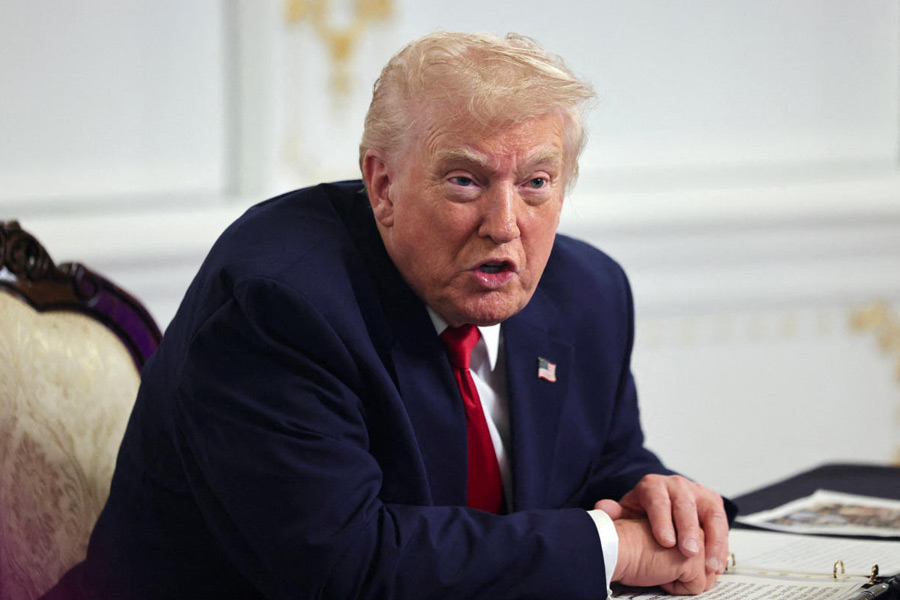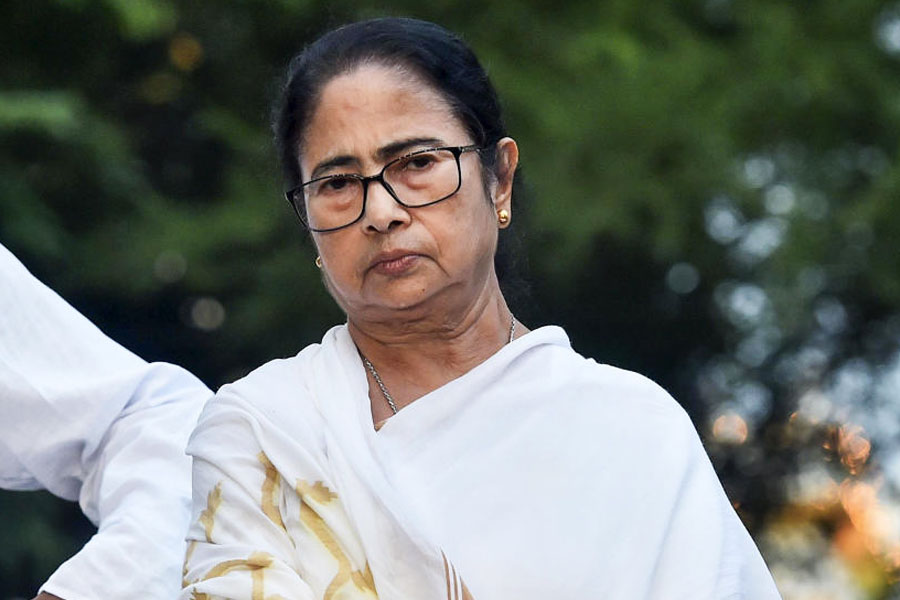There’s an old saying in investing: “Buy when there’s blood in the streets.” In other words, when stocks are down and everyone’s scared, it’s usually a good time to buy. So for investors, the question is: Has the market fallen enough to be a buying opportunity?
The short answer is no. "The markets are finally correcting. Given that markets swing between extremes, they can fall more just like they rose to the peak,” says Zerodha chief executive Nithin Kamath. “We are seeing a massive drop in terms of both the number of traders and volumes,” Kamath adds. “Across brokers, there's been more than a 30 per cent drop in activity."
Analysts warn that while stocks are down, they may not be cheap enough just yet. “The problem is valuations,” says one strategist. “Even after the selloff, stocks are still priced too high given the risks ahead.”
Others argue that trying to time the bottom is nearly impossible. “If you’re a long-term investor, these levels are already attractive compared to last year’s highs,” another analyst says. “But if you’re hoping for a quick rebound, you might be waiting a while.”
Friday’s GDP numbers showed growth rebounded in the last quarter, marking a rare piece of good economic news. But before anyone could celebrate, the NSE Nifty 50 logged its fifth straight monthly loss – its longest losing streak since its launch in 1996 – making India the worst-performing major market globally. Investors have watched nearly Rs 85 trillion in wealth evaporate since September.
Markets tend to move in cycles, and right now, we’re in a classic downturn. Some analysts believe we haven’t yet seen the kind of panic selling that marks a true bottom. The dot-com bust of the early 2000s took two years to fully play out, and the financial crisis of 2008 saw stocks slide for over a year before bouncing back.
What’s driving the sell-off now? Weak earnings, persistent foreign outflows, and uncertainty regarding Donald Trump's threats of reciprocal tariffs, alongside fears of a US economic slowdown, are weighing on the markets. Add US-China trade tensions, ongoing wars, and fears of a downturn in Europe to the mix, and you’ve got investors who are really on edge.
“It’s just not a market where people feel comfortable taking risks right now,” said one trader. “Nobody wants to catch a falling knife.”
The Nifty1 is now 16 per cent lower – or 4,150 points down – from its September peak of 26,277.35.
GDP expanded by 6.2 per cent in the October-December period, up from 5.6 per cent the previous quarter, but the rise was well below the red-hot expansion seen in the three years after the pandemic. And the road ahead is packed with potholes.
"In the current scenario of U.S. tariff uncertainty, Indian markets will struggle a bit more," says Mahesh Patil, chief investment officer at Aditya Birla Sun Life Asset Management Company.
And big money is pulling out. Hedge funds and foreign investors are dumping stocks and moving into safer bets like bonds. Foreign Institutional Investors (FIIs) sold Indian equities worth Rs 11,639 crore on Friday, recording their highest single-day sell-off in February. Through the month, they were net sellers at Rs 34,574 crore. Foreign investors have sold Indian equities worth about Rs 2,500 crore on a net basis since the end of September, of which Rs 410 crore was in February.
The benchmark Sensex dropped 4,000 points in February, translating into a 5 per cent loss for the month. The slide wiped over Rs 40 lakh crore from the market capitalisation of BSE-listed companies in just one month.
"The markets are finally correcting. Given that markets swing between extremes, they can fall more just like they rose to the peak. I’ve no idea where the markets go from here,” says Kamath.
“But I can tell you about the broking industry. We are seeing a massive drop in terms of both the number of traders and volumes,” Kamath adds. “Across brokers, there's been more than a 30 per cent drop in activity… This drying up of volumes shows how shallow the Indian markets still are. The activity is more or less among those 1-2 crore Indians.”
While there could be brief rallies, "India will remain a sell-on-the-rise market for a few more months," Patil says. Investors must keep track of global developments that can serve as catalysts for setting the domestic market tone, says Osho Krishnan of Angel One.
Local institutional investors have remained buyers due to strong retail interest, but inflows are slowing, Kotak Institutional Equities chief executive Pratik Gupta says. “Most local mutual funds, insurance, and portfolio management funds are seeing a slowdown in their equity inflows," he says.
Small-caps, mid-caps hit most
Small-cap and mid-cap stocks have been hit harder than large caps. In February, the Nifty Small-Cap 100 plunged 13.2 per cent, and the Mid-Cap 100 index slid 11 per cent as investors scurried to book profits or cut losses. This has brought the Small-Cap 100 to 26 per cent below its record high last year. The Mid-Cap index is 22 per cent down from its 2024 peak.
"Selling pressure will continue to prevail in small-caps and mid-caps. Investors will stay away and wait and watch – there won't be strong buying support in the next month or two," Patil says.
While outside factors like Trump's tariff war threats and US slowdown worries – the American economy logged annualised 2.3 per cent growth in the last quarter after accelerating 3.1 per cent in the previous quarter – have depressed markets, a third of mid-caps missed their third-quarter earnings estimates.
Helping spur the better Indian GDP numbers was government spending, which roared back to life, shooting up 8.3 per cent year-on-year – more than double the previous quarter’s 3.8 per cent rise. A bumper harvest helped rural incomes, driving up festive season spending and giving consumer consumption a much-needed lift.
But the big question is whether the upturn can last. “The outlook remains clouded by downside risks from global trade tensions,” notes Kotak Mahindra Bank economist Upasna Bhardwaj. While the GDP numbers were on target, the government’s growth estimate of 7.5 per cent for the final January-March quarter appears “overly optimistic,” says Bhardwaj. The IMF, meanwhile, predicts India’s growth will slow in the coming years, citing worsening global financial conditions and weaker export demand.
The Reserve Bank of India has started cutting interest rates for the first time in nearly five years, trying to pump life into the economy. It’s also injected over $25 billion into the banking system to ease an investment cash crunch. But loan expansion needed for investment is patchy, and some experts say interest rates won’t come down far enough to jolt the economy into high gear.
The one bright spot: Inflation cools
One bright spot? Indian inflation, 2024’s biggest headache, has cooled. Retail inflation fell to 4.3 per cent in January, and the RBI expects it to average 4.2 per cent in the next fiscal year. Then again, though, the relief may not last. A fresh surge in global commodity prices or supply chain disruptions could send prices soaring again, squeezing both consumers and businesses.
India’s rural economy has been a saving grace, providing a cushion against urban economic woes. Good weather boosted agriculture. Rural households had more money in their pockets thanks to a bumper harvest, and festive season shopping sprees boosted consumption.
However, manufacturing continues to struggle, reflecting weak industrial activity and global supply chain disruptions, and urban consumption remains weak. And while the service sector has held up reasonably well, it won’t be enough to carry the entire economy forward.
For the economy to truly take off, growth needs to be broad-based. Wage growth in cities is slow, and the country is still failing to generate enough jobs for its huge, growing young population, which puts a damper on spending.
“India is still the world’s fastest-growing major economy, but we can’t ignore the cracks,” former RBI governor Raghuram Rajan notes. “Manufacturing is struggling, private investment remains sluggish, and global risks are mounting.”
In other words: Buckle up for turbulence ahead.











